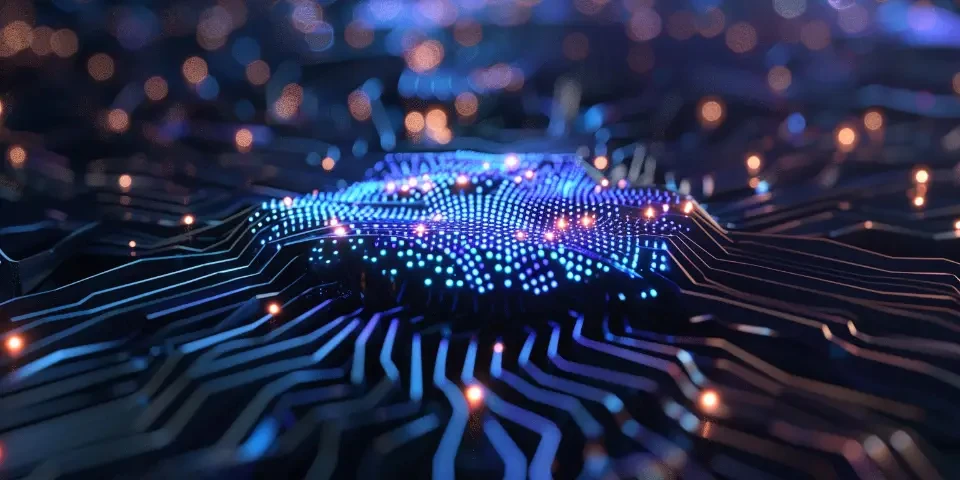Securing the Digital World AI's Role in Cybersecurity and Data Protection
In today's digital age, cybersecurity and data protection have become paramount concerns for individuals and organizations alike. The rise of artificial intelligence (AI) has brought new possibilities for safeguarding our digital assets. With its ability to process large amounts of data and detect patterns, AI is revolutionizing the way we approach cybersecurity. In this article, we will explore the various ways in which AI is playing a crucial role in securing the digital world.
1. Threat Detection and Prevention
AI-powered systems have proven to be highly effective in detecting and preventing cyber threats. Through advanced machine learning algorithms, these systems can analyze vast amounts of data, identify patterns, and pinpoint potential risks. By continuously learning from new data, AI can adapt and evolve to counter ever-changing threats, providing a proactive defense mechanism.

Furthermore, AI-powered cybersecurity solutions can quickly detect abnormalities and anomalous activities, raising red flags when suspicious behavior is observed. This helps organizations take immediate action to prevent potential data breaches or attacks.
2. Enhanced Malware Detection
Traditional signature-based antivirus software is often unable to keep up with the rapidly evolving landscape of malware. AI-powered malware detection tools take a different approach. They leverage machine learning to analyze characteristics and behavior patterns of known malware to identify new variants. This enables proactive detection and protection against emerging threats, ensuring more robust defense mechanisms.
Moreover, AI systems can analyze data from multiple sources, including real-time monitoring of network traffic and user behavior, to detect sophisticated malware attacks that may bypass conventional security measures.
3. Intelligent User Authentication
User authentication is a critical component of data protection. Passwords alone are often inadequate, as they can be easily compromised. AI technology can provide more robust authentication methods, such as biometric authentication or behavioral biometrics.
Biometric authentication uses unique physical characteristics, like fingerprints or facial features, to verify an individual's identity. AI algorithms can analyze these biometric data points with high precision, making it difficult for unauthorized individuals to gain access.
Behavioral biometrics, on the other hand, analyze patterns in user behavior, such as typing speed or mouse movements, to authenticate individuals. AI-powered systems can continuously learn and adapt to user behavior, detecting any anomalies that may indicate unauthorized access attempts.
4. Predictive Analytics for Risk Assessment
AI's predictive analytics capabilities enable organizations to assess potential risks and vulnerabilities in their cybersecurity measures. By analyzing historical data, AI algorithms can identify patterns and correlations, providing insights into potential cyber threats.
Organizations can leverage AI systems to simulate various attack scenarios and measure the effectiveness of their security measures. This allows for proactive decision-making and the prioritization of resources to address potential vulnerabilities.
5. Automated Security Incident Response
When a security incident occurs, quick and effective response is crucial. AI-powered systems can automate the detection and response to security incidents, significantly reducing the response time.
By continuously monitoring network traffic and data logs, AI systems can identify and contain potential threats, minimizing the impact of an attack. Automated incident response processes can quarantine affected systems, apply necessary patches, and initiate recovery procedures, all without human intervention.
6. Fraud Prevention in E-commerce
E-commerce platforms often face threats from fraudsters looking to exploit vulnerabilities. AI algorithms can analyze customer behavior, transaction patterns, and other relevant data to detect fraudulent activities.
AI-powered fraud prevention systems can identify suspicious transactions, flagging them for manual review or blocking them altogether. This ensures a safer and more secure environment for online transactions, protecting both businesses and consumers.
7. Insider Threat Detection
Insider threats pose significant risks to organizations, as malicious insiders can abuse their access privileges to steal sensitive data or compromise security. AI can help detect and prevent these threats by monitoring user behavior and identifying anomalies.
Through user behavior analytics, AI systems can establish baseline behavior profiles for each user. Any deviations from these profiles can raise alerts, enabling organizations to investigate potential insider threats and take necessary actions.
8. Security in Internet of Things (IoT) Devices
With the proliferation of IoT devices, the need for robust security solutions is essential. AI-powered systems can provide enhanced security for IoT devices by continuously monitoring their behavior and detecting potential vulnerabilities.
AI algorithms can detect abnormal device behavior, such as unusual data transfer patterns or unauthorized access attempts, and trigger appropriate actions to mitigate potential risks. This ensures that IoT devices remain secure and prevent compromised devices from becoming entry points for cyber-attacks.
FAQs:
1. Can AI completely eliminate all cyber threats?
While AI presents new possibilities in cybersecurity, it cannot completely eliminate all threats. As attackers continually evolve their techniques, AI systems must constantly adapt to remain effective. Additionally, AI is not immune to vulnerabilities, and malicious actors may attempt to exploit weaknesses in these systems.
2. How can organizations implement AI-powered cybersecurity solutions?
Organizations can implement AI-powered cybersecurity solutions by partnering with vendors specialized in developing such systems. These systems can be deployed on-premises or offered as cloud-based services, depending on the organization's requirements.
3. What are the ethical considerations surrounding AI in cybersecurity?
As AI becomes more integrated into cybersecurity practices, ethical concerns arise. These include issues of privacy, transparency, and biases within AI algorithms. It is essential for organizations and AI developers to ensure responsible and ethical AI implementation and address these concerns to maintain trust and fairness.
References:
1. Smith, C. (2019). Artificial Intelligence and Cybersecurity - Trends, Challenges, and Solutions. IEEE Security & Privacy Magazine.
2. Symantec. (n.d.). How AI Is Revolutionizing Cybersecurity.
3. Digital Guardian. (2021). How AI and ML Improve Cybersecurity.
Explore your companion in WeMate